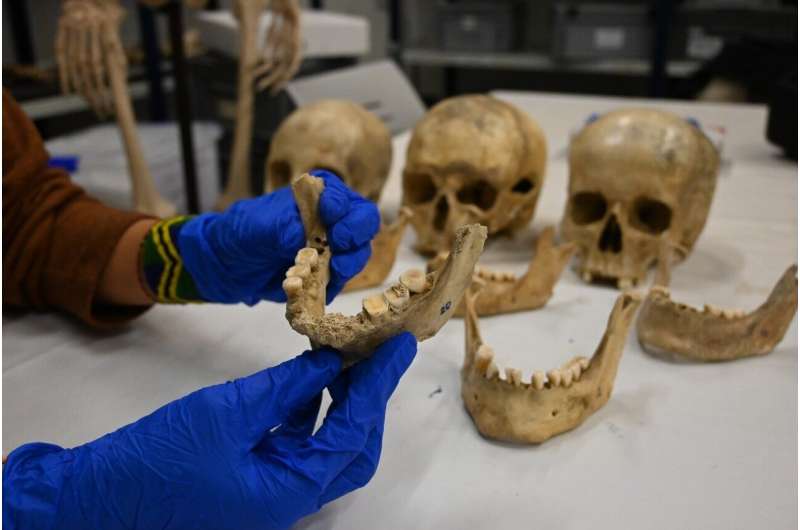This article has been reviewed according to Science X's editorial process and policies. Editors have highlighted the following attributes while ensuring the content's credibility:
fact-checked
proofread
Study reveals the dietary practices of the agropastoral communities of the northeast Iberian Peninsula

Raquel Hernando, a Juan de la Cierva researcher associated with the European project TIED2TEETH, at the Centro Nacional de Investigación sobre la Evolución Humana (CENIEH), is the lead author of a paper published in the American Journal of Biological Anthropology, in which the teeth of 84 adult individuals found at eight sites in the northeast Iberian Peninsula were analyzed to offer new perspectives on the diet of these populations in recent prehistory.
This study shows that the mixed diet of the agropastoral groups of this period, which covers from the Middle Neolithic to the Middle Bronze Age, was made up of cereals with regular intake of meat or dairy products, though each group had its own dietary specialization.
The technique known as microwear was used to analyze the buccal surface of the teeth found at the following sites: Cova de l'Avi (Vallirana, Barcelona), Cova de Can Sadurní (Begues, Barcelona), Cova de la Guineu (Font-Rubí, Barcelona), Cova Foradada (Calafell, Tarragona), Cova del Trader (Cubelles, Barcelona), Roc de les Orenetes (Queralbs, Girona), Cova del Gegant (Sitges, Barcelona) and Cova dels Galls Carboners (Mont-ral, Tarragona).
This technique enables the physical and mechanical properties of the foodstuffs consumed to be determined and offers evidence of food preparation practices by quantifying the microscopic traits (striations and pits) on the tooth surface caused by the process of mastication.
"We have observed that these dietary practices evolved and became specialized in response to cultural, environmental, economic and technological components specific to each agropastoral community," says Hernando.
Production economies
The origins and subsequent intensification of these production economies contributed to wide-ranging cultural, social and economic transformations during recent prehistory.
In the northeast Iberian Peninsula, this period is characterized by a series of sociocultural, technological and demographic changes at different regional paces, thus offering the perfect scenario for investigating how the diet of these groups evolved.
More information: R. Hernando et al, Eating through time: Understanding dietary practices across late prehistory in the northeastern Iberian Peninsula, American Journal of Biological Anthropology (2024). DOI: 10.1002/ajpa.24950
Provided by CENIEH




















